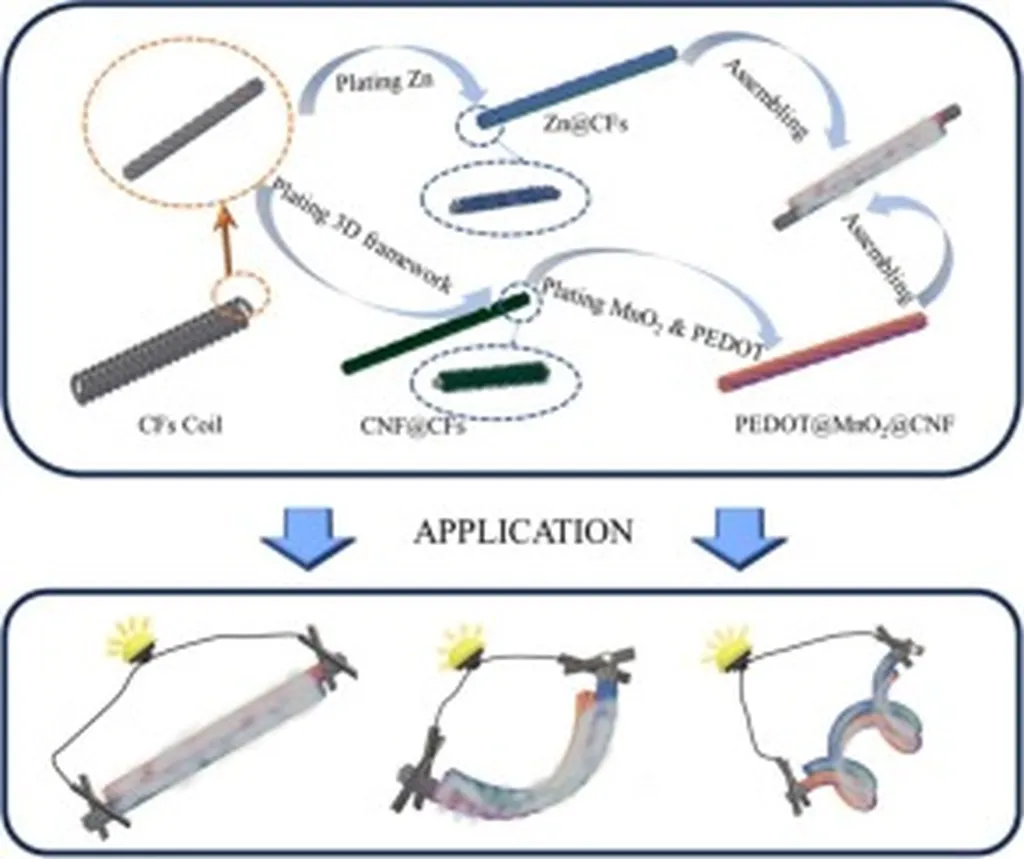In the rapidly evolving world of wearable technology, the quest for efficient, flexible, and safe energy storage solutions has led researchers to explore innovative avenues. A recent study published in *InfoMat* (translated as “Information Materials”) sheds light on the promising potential of fiber-shaped zinc batteries (FZBs), offering a glimpse into the future of smart fabrics and wearable electronics. Led by Chongyang Luo from the College of Aerospace Science and Engineering at the National University of Defense and Technology in Changsha, China, this comprehensive review could pave the way for significant advancements in the energy sector.
Fiber-shaped batteries, with their unique one-dimensional architecture, offer unparalleled flexibility, stretchability, and knittability, making them ideal for integration into smart wearable fabrics. Among the various battery systems, aqueous zinc batteries have emerged as a frontrunner due to their high specific capacity, inherent safety, and cost-effectiveness. However, the practical application of FZBs has been hindered by challenges in scalable production, long-term operational stability, and seamless integration.
Luo and his team have systematically reviewed the fundamental components of FZBs, including cathodes, anodes, electrolytes, current collectors, and encapsulation materials. They have also compared the impact of various assembly configurations, such as parallel, winding, coaxial, and weaving structures, on battery performance. “Understanding these components and configurations is crucial for optimizing the performance of FZBs,” Luo explains.
The review delves into diverse manufacturing techniques for fiber electrodes, including dip-coating, hydrothermal synthesis, and electrodeposition, as well as the assembly procedures ranging from manual to equipment-assisted and one-step assembly methods. The researchers highlight strategies for improving both electrochemical and wearable performance through material modification and structural design.
One of the most exciting aspects of this research is the exploration of multifunctional applications of FZBs. These include thermosensitive, fluorescent, and sweat-driven variants, along with their potential in physiological sensing and environmental monitoring. “The versatility of FZBs opens up new possibilities for their application in various fields,” says Luo.
Despite the promising potential, the researchers identify several barriers to the commercialization of FZBs, including limited energy density, complex integration processes, and unclear internal mechanisms. They propose future research directions and development initiatives to advance the field of FZBs, promoting their transition from laboratory prototypes to commercial products.
The insights provided by this review could significantly impact the energy sector, particularly in the development of wearable technology. As the demand for smart fabrics and wearable electronics continues to grow, the need for efficient and safe energy storage solutions becomes increasingly critical. The research led by Chongyang Luo offers a roadmap for overcoming the challenges associated with FZBs, bringing us one step closer to a future where our clothing and accessories are not just functional but also intelligent and interconnected.
In the words of Luo, “The journey towards commercializing fiber-shaped zinc batteries is challenging, but the potential rewards are immense. We are optimistic about the future of this technology and its impact on the energy sector.” As we look ahead, the work published in *InfoMat* serves as a beacon of hope and a call to action for researchers and industry professionals alike.

